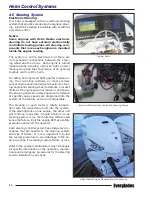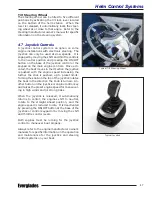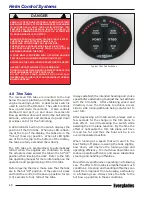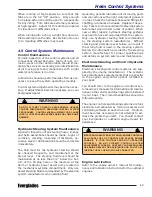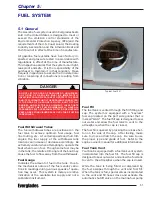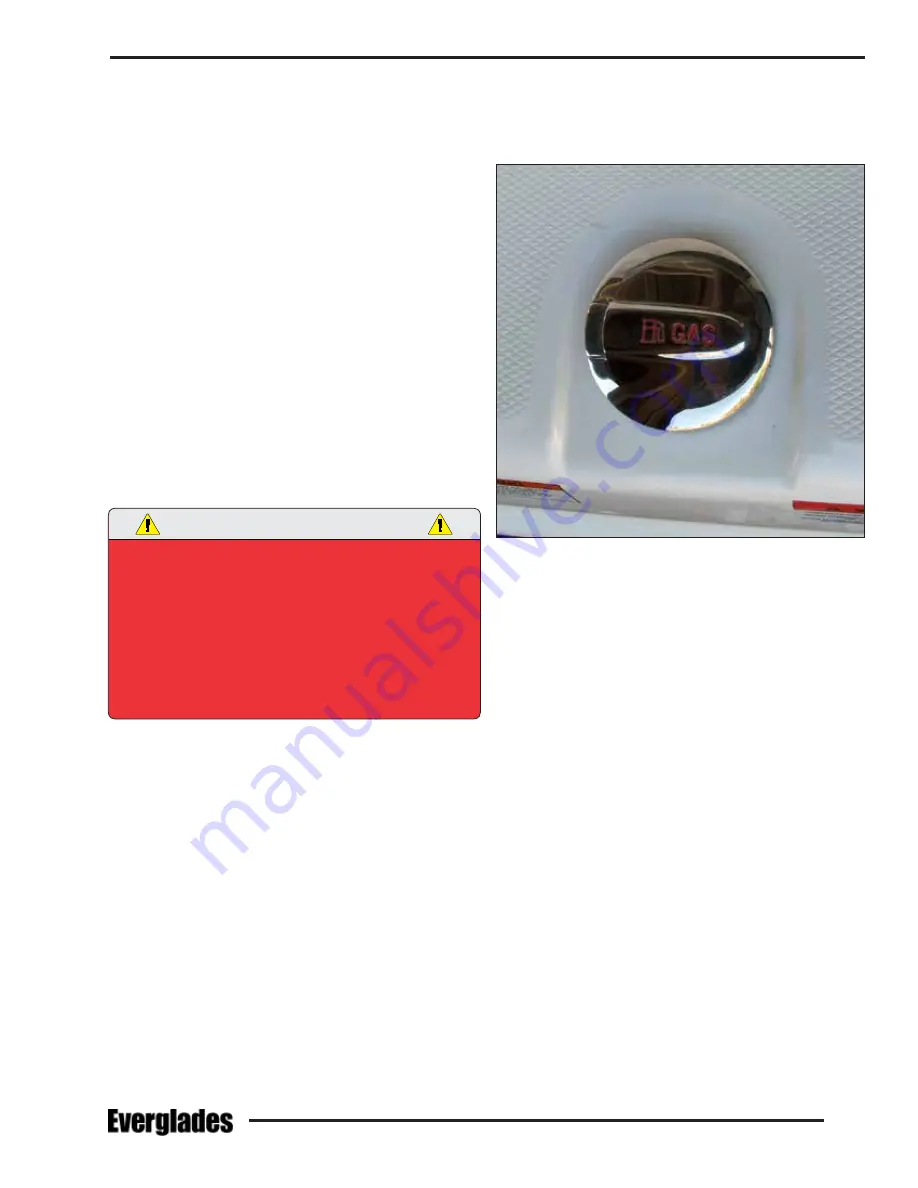
51
FUEL SYSTEM
5.1 General
The Gasoline fuel system used in Everglades boats
sold in the United States is designed to meet or
exceed the emission control standards of the
Environmental Protection Agency (EPA)and the
requirements of the U.S. Coast Guard, the Boating
Industry Association and the American Boat and
Yacht Council in effect at the time of manufacture.
All gasoline fuel systems have been factory in-
spected and pressure tested in accordance with
regulations in effect at the time of manufacture.
This inspection assures that the system is air tight,
leak proof and safe. It is the responsibility of the
purchaser to maintain it in that condition. Make
frequent inspections to assure that no deteriora-
tion or loosening of connections is resulting from
vibration.
DANGER
DO NOT LET THE ODOR OF GASOLINE GO UNCHECKED.
ANY ODOR OF GASOLINE MUST BE IMMEDIATELY
INVESTIGATED AND STEPS TAKEN TO PROTECT THE BOAT
AND ITS OCCUPANTS UNTIL THE PROBLEM IS CORRECTED.
IF THE ODOR OF GASOLINE IS NOTED, SHUT OFF ALL
ENGINES AND ELECTRICAL EQUIPMENT. INVESTIGATE
AND CORRECT THE SITUATION IMMEDIATELY. HAVE ALL
PASSENGERS PUT ON PERSONAL FLOTATION DEVICES AND
KEEP A FIRE EXTINGUISHER READY UNTIL THE SITUATION
IS RESOLVED.
Fuel Withdrawal Tubes
The fuel withdrawal tubes are positioned in the
fuel tank to achieve optimum fuel usage, fuel
line routing, etc. At certain speeds and hull trim
angles, the fuel supply at the withdrawal tank
location can increase or decrease accordingly. Be
extremely careful when attempting to operate the
boat when low on fuel. Though some fuel may be
in the tank, the relative trim angle of the boat may
cause the fuel to flow away from the withdrawals.
Fuel Gauge
Indicates the amount of fuel in the tank. Due to
the mechanical nature of the fuel sender, varia-
tions in readings during various speeds of opera-
tion may occur. This system is merely a relative
indication of the available fuel supply and not a
calibrated instrument.
Fuel Fill
The fuel tank is vented through the fill fitting and
cap. The system is equipped with a “keyless”
fuel cap located on the port side gunnel that is
marked “GAS.” The fuel fill cap is designed to seal
out water and allow the fuel tank to vent to the
atmosphere when the cap is closed.
The fuel fill is opened by pressing the release but
-
ton on the side of the cap. After fueling, make
sure to close and latch the cap. Be sure to use
the proper type and grade of fuel. Refer to the
engine owner’s manual for additional information.
Fuel Tank Vent
Your boat is equipped with a fuel tank vent system
incorporated into the fuel fill. The fuel fill cap is
designed to seal out water and allow the fuel tank
to vent to the atmosphere when the cap is closed.
While the tank is being filled, air displaced by
the fuel escapes through the vent and fuel fill.
When the tank is full, special valves incorporated
in the vent and fill hoses close and activate the
automatic shutoff valve on the marina fuel pump
Chapter 5:
Typical Fuel Fill
Summary of Contents for 340 DC
Page 1: ...OWNER S MANUAL 340 DC...
Page 2: ...2 Revision 0 11 07 2018...
Page 14: ...14 NOTES...
Page 22: ...22 NOTES...
Page 25: ...25 Operation...
Page 86: ...86 NOTES...
Page 102: ...102 NOTES...
Page 122: ...122 NOTES...
Page 130: ...130 NOTES...
Page 149: ...149 MAINTENANCE LOG Appendix B Hours Date Dealer Service Repairs...
Page 150: ...150 Maintenance Log Hours Date Dealer Service Repairs...
Page 151: ...151 Maintenance Log Hours Date Dealer Service Repairs...
Page 152: ...152 Maintenance Log Hours Date Dealer Service Repairs...
Page 153: ...153 Maintenance Log Hours Date Dealer Service Repairs...
Page 154: ...154 Maintenance Log Hours Date Dealer Service Repairs...
Page 155: ...155 Appendix C BOATING ACCIDENT REPORT...
Page 156: ...156 Boating Accident Report...
Page 157: ...157 Boating Accident Report...
Page 158: ...158 NOTES...
Page 160: ...160 NOTES...
Page 167: ...CAUSE AND SOLUTION...










